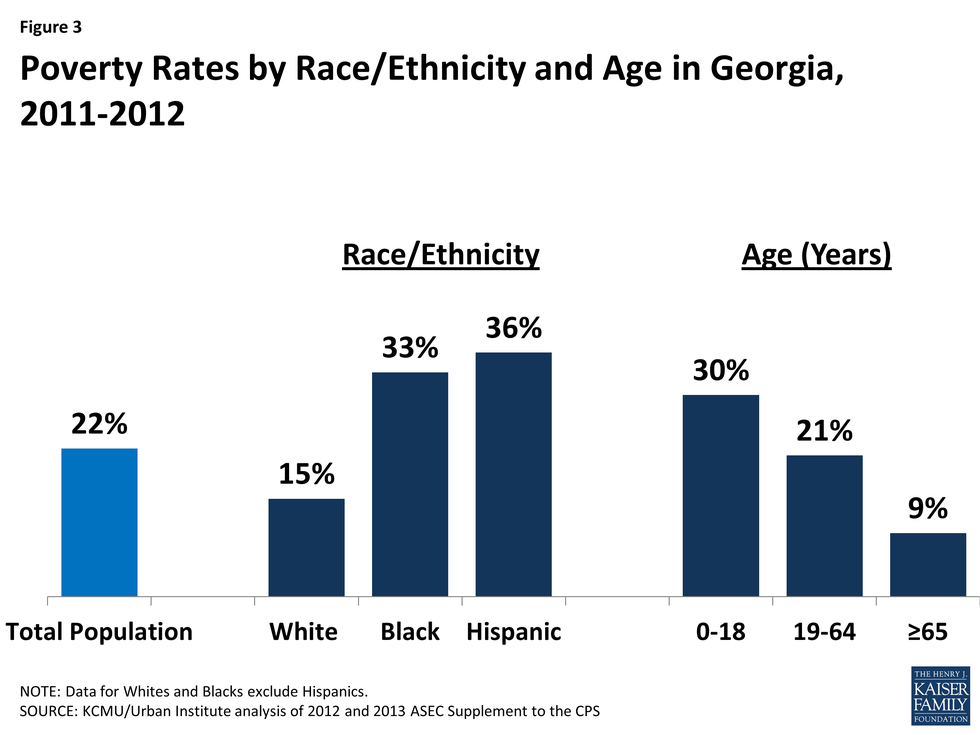The U.S. Department of Justice’s Civil Rights Division concluded its investigation into the wrongful segregation of “problematic” students in Georgia to “inferior facilities in various states of disrepair… [that] formerly served as schools for black students during de jure segregation.

Earlier this year a study released by the U.S. Department of Education showed that America’s education system is still separate and unequal; black children are less likely to succeed in school due to socioeconomic status.
According to the National Center for Education Statistics, black students in Georgia are most at risk for noncompletion of high school. Statistics show that in 2011-12 black students had a potential graduation rate of 62 percent, compared to the 78 percent graduation rate of white studentsThe Cherokee County school district’s 4-year graduation rate increased in 2014 and consistently exceeds the state average by 10 percent at 82 percent. These statistics rank the Cherokee County school district as the second-highest graduation rate in Georgia.“Graduation is the culmination of many years of hard work by not only students,” said Superintendent of Schools Frank R. Petruzielo. “But also the parents, grandparents, teachers, counselors, administrators, support staff, business partners and volunteers.”According to Lindsey Cook of USN&WR, “More than 2 million black students attend schools where 90 percent of the student body is made up of minority students.”Statistically, black students come from less fortunate, broken homes that do not have a plethora of financial and emotional support. On average, a black student attending a more minority filled school has less access to important educational tools and educators that are less qualified. These are factors that may contribute to low graduation rates.
 Georgia has nearly an equal amount of black students enrolled in school as white students, according to the GA Department of Education, approximately 724,272 white students in K-12 and 641,568 black students in 2015.The Fulton County school district falls under the state average graduation rate at 71.3 percent. Fulton statistically in 2014 enrollment had a higher number of black students in its district than white, almost 9 thousand more. Whereas Cherokee county in 2014 had 14.5 thousand white students and only 1.5 thousand black students.
Georgia has nearly an equal amount of black students enrolled in school as white students, according to the GA Department of Education, approximately 724,272 white students in K-12 and 641,568 black students in 2015.The Fulton County school district falls under the state average graduation rate at 71.3 percent. Fulton statistically in 2014 enrollment had a higher number of black students in its district than white, almost 9 thousand more. Whereas Cherokee county in 2014 had 14.5 thousand white students and only 1.5 thousand black students.
“When I moved to Cherokee county I didn’t see anyone that looked like me," said New York native, current sophomore at ACE academy, O’Ryan Green. "I recall when I lived in New York seeing a lot more diversity.”
Though Cherokee county schools are tackling the graduation rate effectively they have seemed to pay no mind to the lack of diversity. Black students that are the minority in their schools face a different problem and that is discrimination and internal segregation. Discrimination and segregation in the education system is not new and has not gone away; it hinders the effectivity of the working education system by displacing or pushing out students that are not the majority.
“I still kind of see [segregation], me personally, at this new school at lunch, the whites kind of stay with the whites and the blacks stay with the blacks,” according to 14-year-old Dale Shaw, freshman at Sequoyah high school.Studies by the Center for American Progress have shown that students that are exposed to diverse educational settings and have educators that are just as diverse as the students are more likely to succeed in school. Studies also show that when students are exposed to other cultures in school they are less likely to develop prejudices and believe stereotypes“Every day before class started I would go try to touch the rim on the basketball goals and eventually I was able to,” said school athlete and Sequoyah freshman, Jayden Montgomery. “I was starting to hang with two hands, I was beginning to get my vertical and my white classmates started saying I was only able to do that because I was black.”When diving into the real problems of the Georgia education system, a theme older than the American Constitution is unsurfaced; this is a story of lack of opportunity and social injustice.When asked about what they thought would change the prejudice and internal segregation Green, Shaw, and Montgomery all agree that the school system acknowledging there is a problem would be a great start.








 Energetic dance performance under the spotlight.
Energetic dance performance under the spotlight. Taylor Swift in a purple coat, captivating the crowd on stage.
Taylor Swift in a purple coat, captivating the crowd on stage. Taylor Swift shines on stage in a sparkling outfit and boots.
Taylor Swift shines on stage in a sparkling outfit and boots. Taylor Swift and Phoebe Bridgers sharing a joyful duet on stage.
Taylor Swift and Phoebe Bridgers sharing a joyful duet on stage.













